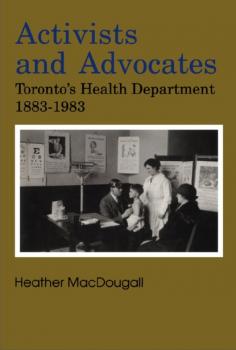Медицина
Различные книги в жанре МедицинаДиагноз по картине
Какими болезнями страдали известные художники, как они влияли на их творчество, и как мы можем узнать об этом, глядя на их картины? Рассказывает Алексей Водовозов, токсиколог, научный журналист, врач-терапевт высшей квалификационной категории. Хронометраж: 1:03 – Камиль Писарро. 6:22 – Клод Моне. 13:09 – Огюст Ренуар. 16:30 – Ричард Дадд. 22:20 – Михаил Врубель. 28:35 – Луис Уэйн. 34:15 – Как может повлиять эндокринная система художника на то, что он рисует? 34:46 – Как определяется диагноз шизофрении? 37:30 – Есть ли примеры когда художники справлялись со своими заболеваниями и как это сказывалось на их творчестве? Выражаем благодарность Просветительскому проекту МатЧасть (г. Краснодар) за помощь в организации съёмок. наука, научпоп, , диагноз по картине, шизофрения, Алексей Водовозов, Водовозов, Камиль Писарро, Клод Моне, Огюст Ренуар, Ричард Дадд, Михаил Врубель, Луис Уэйн, художник, известный художник, токсоплазма, токсоплазмоз, котики, психические расстройства, психические заболевания, психические болезни
Вакцины: жертвы собственной эффективности
Наши современники воспринимают достижения медицины как должное. Человечество, особенно проживающее в относительно развитых странах, уже успело забыть, что такое крупномасштабные эпидемии с сотнями тысяч погибших, и все активнее «катит бочку» на вакцинопрофилактику. Почему так происходит, понятно: прививки касаются буквально каждого ребенка, а любой родитель генетически запрограммирован на то, чтобы всеми правдами и неправдами защищать своих детей от опасностей – как реальных, так и несуществующих. Причем последние как раз самые страшные, ведь люди, которые профессионально зарабатывают, например, на антипрививочной истерии, лепят из вакцин такого монстра, что не испугаться его невозможно. Страх отлично монетизируется. А мы попробуем разобраться, какие реальные причины для страха существуют, а какие выдуманы. Читает лекцию врач высшей категории, токсиколог Алексей Водовозов. #научпоп, вакцины, антивакцинация, прививки, антипрививки, лечение, медицина, Алексей Водовозов, альтернативная медицина, наука, , достижения медицины, что в прививках
Посмертные приключения. Что может случиться с вашим телом после смерти?
Что есть жизнь после смерти? Хоть мы и живем в XXI веке, в эпоху высоких технологий, ответа на этот вопрос у нас до сих пор нет. Возможно, те различные изменения, которые претерпевают тела мертвых, причем не только запрограммированные природой, но и заданные самим человеком, это и есть та самая жизнь. Оказывается, она может быть вполне себе увлекательной. Человеческие останки легально могут быть использованы в научных исследованиях, которые проводятся на так называемых фермах трупов. Тело может превратиться в «святые мощи» – реликвии, почитаемые верующими самых разных религий, от христианства до буддизма. В разное время охоту на человеческие останки устраивали суеверные жители Восточной Европы, верившие в реальность вампиров, а также расхитители могил, продававшие выкопанные ими трупы врачам для проведения демонстрационных вскрытий. А также эта книга познакомит читателя с «нестандартными» способами ухода из этого мира, когда человеческое тело превращают в удобрение или подвергают биокремации, то есть растворяют в аппарате щелочного гидролиза. Внимание! Мнение автора книги может не совпадать с позицией издательства. В формате PDF A4 сохранен издательский макет.
Alzheimer's Disease
A guide for caregivers and sufferers coping with Alzheimer’s. Alzheimer’s disease is a reality in millions of lives and a serious concern for seniors and their loved ones. In developed countries where people are living longer than ever before, the incidence of Alzheimer’s is reaching epidemic proportions, according to the World Health Organization. For families, sufferers, and caregivers, the need for reliable, clear, and concrete information has never been greater. Alzheimer’s Disease: The Complete Introduction is a comprehensive guide to the disease and its effects: getting a diagnosis, the ways it can progress and be managed, strategies for supporting sufferers and accessing care, legal concerns, and more. This guide addresses every aspect of the disease from the first doctor’s visit to the long-term measures that can drastically improve the lives of sufferers and those close to them. Inside, you will find: Practical and comprehensive information to guide every step of the process of seeking treatment or a diagnosis A reassuring, realistic guide for family members, caregivers, and patients themselves Answers to the most commonly asked and most pressing questions about Alzheimer’s Detailed and clear chapters on the lifestyle habits that may aid in preventing and managing Alzheimer’s Written by two medical experts, this guide is intended for all. It aims to demystify the disease and provide a clear path to reclaiming stability and quality of life. Finally, it explains the real progress that has been made over the past five years in treatment and prevention.
What Your Doctor Really Thinks
Q. You’ve been sent for a stress test. Does this mean your doctor thinks there’s something wrong with your heart? A. Not necessarily. Doctors often schedule stress tests when they are certain a patient’s heart is healthy. So why the test? In What Your Doctor Really Thinks , Ian Blumer looks at the doctor-patient relationship, and explains what your doctor will and won’t tell you in the examining room. Blumer lets you know what is going on in your physician’s head, and suggests what should be going on in your head, when you present him or her with symptoms. Fatigue, chest pain, headaches, abdominal pain, dizziness, shortness of breath … Blumer covers a variety of symptoms and discusses what direction the examination may take. This book is a look into the psyche of the doctor and the patient during their meetings. It is a discussion of what both parties might be thinking, but not saying, and it reveals the so-called «mind games» that often take place. It tells people why, without their having even realized it, they have just left a doctor’s office not knowing if the «growth» they have is worrisome or harmless, if they have a dim future or a good one. It tells people why doctors are often evasive, or, at times, downright rude. What Your Doctor Really Thinks is not an aid to self-diagnosis. It is not a compilation of medical anecdotes glorifying the practice of medicine. And it is not a self-help guide to teach you about the disease that afflicts you. It is, rather, an aid to understanding your doctor, and to understanding yourself. Everyone from the health-conscious to the hypochondriac will find familiar symptoms in Blumer’s book. You may find comfort in knowing that your symptoms are nothing to worry about; or you may find reason to see your doctor about something that may be more serious than you had thought. Regardless, you will learn not just what a doctor’s diagnosis might be; you will also learn why they have made that diagnosis, and what the diagnosis means.
Sunnybrook Hospital
When Alice M. Kilgour donated her family farm to the City of Toronto in 1928, intending it for use as a public park, no one could have imagined what lay ahead. Ownership of the land was transferred to the Canadian government in 1943. By 1948, Sunnybrook Hospital opened its doors and became the largest veterans’ hospital in Canada. More than 60 years later, Sunnybrook stands as an important symbol of Canada’s gratitude toward its war veterans. Sunnybrook Hospital is a photo journey through the decades that chronicles the contributions of a dedicated group of health professionals and veterans and their tireless efforts to make the hospital what it has become over the years. Together they have set a remarkable standard in all fields of care, teaching, and research in an effort to honour Canada’s heroes.
Nurturing Yesterday's Child
A true collector’s item, Nurturing Yesterday’s Child offers an illustrated history of the care of children from early Greek, Roman and Egyptian times to the present – a history that will inform you and touch your heart. There is much to fascinate a parent and particularly those with medical connections and interests. Dr. Theodore Drake (1891-1959), co-inventor of Pablum, collected feeding vessels, rattles and teethers, amulets, furniture, books, stamps, and coins during a lifetime of medical studies and practice in Canada and abroad. His collection encompasses some 3,000 artifacts, 1,500 rare books, 1,000 prints, 1,000 coins and medals, and all child welfare stamps up to the 1950s. Nurturing Yesterday’s Child is a remarkable tribute to a remarkable man who showed the same amount of care and thoughtfulness when amassing this vast collection as he showed for the health of children throughout a long and distinguished medical career.
Spin Doctors
Canadians visit chiropractors about 30 million times a year, and surveys show that patients are generally satisfied with their treatment. But studies also show that as many as two hundred Canadians a year suffer strokes brought on by neck manipulation. Spin Doctors takes a hard, dramatic, and spine-chilling look into the world of chiropractic medicine. You will be surprised to learn what chiropractors treat and why and how much it costs you as a taxpayer. Most importantly, you'll learn how to protect yourself and your family from dangerous adjustments, practice-building tactics, bogus treatments, and misleading information.
Ask the Grey Sisters
Ask the Grey Sisters: Sault Ste. Marie and the General Hospital, 1898-1998 tells the story of the creation and one-hundred-year history of the Sault Ste. Marie General Hospital. At a time when Canada’s healthcare system is at a crossroads and we are asked to make crucial decisions for its future, it is intriguing and enlightening to look at the colourful past of a typical community hospital. Throughout the 1890s, Sault Ste. Marie was a town in search of a hospital. Its glory days at the centre of the fur-trade route were long gone and the Sault was in the process of becoming a modern industrial community. Such a community needed a hospital as a centrepiece to attract investors and as a necessary social institution to care for the hundreds of workers who were flocking to town without family support. The General Hospital was established in 1898 after the town committee charged with developing a hospital had been refused funding by both the federal and provincial governments. In desperation, the committee met with the provincial Inspector of Asylums and Prisons (the only provincial official with hospitals in his mandate). «If you wish a hospital of which the work is serious and lasting,» he is reported to have advised them, «ask the Grey Sisters.» And so began a fruitful association between the community of Sault Ste. Marie and two orders of Grey Sisters who have operated the hospital through its one-hundred-year history. Based in part on the extensive archival collections of both orders of nuns, this history includes material from the sisters’ Chronicles and their personal reminiscences. The result is an intimate and detailed portrait of a community hospital, placed in the context of an emerging provincial system of health care.
Activists and Advocates
For more than a century, Toronto's Health Department has served as a model of evolving municipal public health services in Canada and beyond. From horse manure to hippies and small pox to AIDS, the Department's staff have established and maintained standards of environmental cleanliness and communicable disease control procedures that have made the city a healthy place to live. This centennial history anlyzes the complex interaction of politics, patronage and professional aspirations which determine the success or failure of specific policies and programs. As such, it fills a long neglected gap in our understanding of the development of local health services. Using Toronto's changing circumstances as a backdrop, the book details the evolution of the international public health movement through its various phases culminating in the modern emphasis on health promotion and health advocacy. By so doing, it demonstrates the significant contribution of preventive medicine and public health activities to Canadian life









